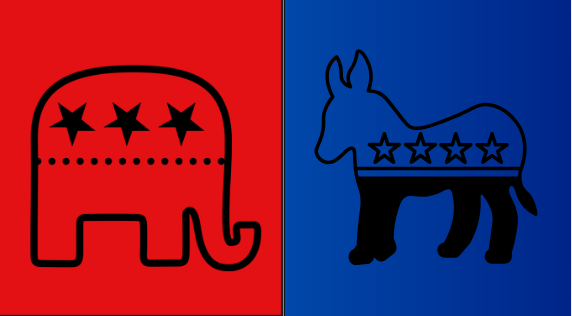Shortly after his inauguration, President Donald J. Trump quickly started his ambitious, yet controversial move of enacting several executive orders.
Many of those executive orders undid years of progress made by past presidents on both the Democratic and Republican sides. Although Trump remains within his political boundaries as president, the onslaught of orders highlights the ever-changing idea of bipartisanship for 21st century America.
AP U.S. History teacher Melissa Gartner explained the purpose behind presidential executive orders. “An executive order is an interesting mechanism that allows the president to sit at a desk and sign off and cause action to happen in our government,” Gartner said. “And it’s not something that is overseen by Congress. Doesn’t need congressional approval. The president can make something happen through the sheer power of the office.”
AP Government teacher Andrew Merritt added context to why executive orders are so prominent today. “Presidents have used them all the way back to [George] Washington, and I would say they’re being used more frequently today or more in a political realm and to favor one side over another, and I don’t think that was the intent when they were created,” Merritt said.
Because Congress doesn’t need to approve executive orders, the president can sign anything as an executive order. This has led to some controversial executive orders being signed by President Trump, including renaming the ‘Gulf of Mexico’ to the ‘Gulf of America’ and ending diversity, equity, and inclusion acts in the government.
However, Trump wasn’t the only president who signed a number of executive orders in a short timeframe. Before leaving office, former President Biden signed 13 executive orders in just January 2025 alone. Both presidents signed over 150 in their first term.
“President Biden and President Trump have been very busy issuing a lot of executive orders…In his first term, President Trump signed 220 executive orders, and President Biden signed 160 as of Dec. 20; I would imagine [Biden’s total] went up on his way out,” Gartner said.
This back-and-forth between political parties highlight an incredibly important aspect of American democracy today: bipartisanship. Although the nation is more divided than ever, bipartisanship is still vital for our nation.
“I may not agree with the other [political party]. I may not even choose their option, but at least if I’ve considered it,” Gartner said. “I may change my policies or factor in something that is important to the other side, but at least it’s making me recognize that other perspectives are out there, and as long as we see that we are stronger with our differences, our differences make us stronger.”
Both parties have good ideas, but their failure to collaborate and see the other side’s opinions holds them back.
“I would say the problem that we’re facing today is that we have too much partisanship, and we need more bipartisanship. If you’re Republican, I’m a Democrat, and you have a good idea, I should be able to say: ‘that’s a good idea,’” Merritt said.
Nevertheless, one danger of bipartisanship is little progress being made in our government. The back-and-forth nature of the two parties means that, in the example of executive orders, an executive order made by one president, may be overturned by the next president.
Merritt provided an example of this in recent history. “President Obama put us in the Paris Climate Accords, and President Trump took us out, and then President Biden put us back in, and then President Trump just took us out. And people look at us, they’re like, ‘What kind of foreign policy do you have?’” Merritt said. “There’s got to be coherence on your policy, and even if I don’t like the policy that you’ve created, unless [I] have a darn good reason to change it … then I should leave it alone.”
The Paris Climate Accord is just one way bipartisanship is failing in America right now. Problems are caused simply because the two political parties disagree with one another and want to send a message of authority and power control to the other side.
Despite this, bipartisanship is important as it forces us to engage with sides we may not agree with, which can actually further our understanding of opposing viewpoints. Even if we disagree, we must be informed about what the other party is saying so we can have informed discussions and share our beliefs accurately.
Merritt suggested that students get off of social media and consume more legitimate news sources. “One of the best news sources that a lot of people don’t watch is the News Hour at night on PBS. I’d listen to National Public Radio. If I’m an avid Fox News viewer, I’m gonna watch MSNBC. If I’m an avid MSNBC watcher, I’m gonna watch Fox,” Merritt said. “I want to be informed fully, not just have my biases confirmed.”
While bipartisanship is far from perfect, it is crucial in today’s democracy. Recognizing its strengths and weaknesses can help Americans to acknowledge what they can do better in the future. By doing this, we’ll find how to bring our parties closer together, where ideas can flourish, and not further apart, where we lose the principles our country was founded on.









![The Varsity Boys Volleyball team poses for a photograph after sweeping Altoona 3-0 in the District 6 Championship game. “[Winning the championship] means a lot and shows the work we have put in all year paying off. Still, we aren't celebrating too much as we still have games ahead of us,” junior Derrick Campbell said.](https://lionsdigest1.com/wp-content/uploads/2025/05/EFP_8864-1200x798.jpg)




